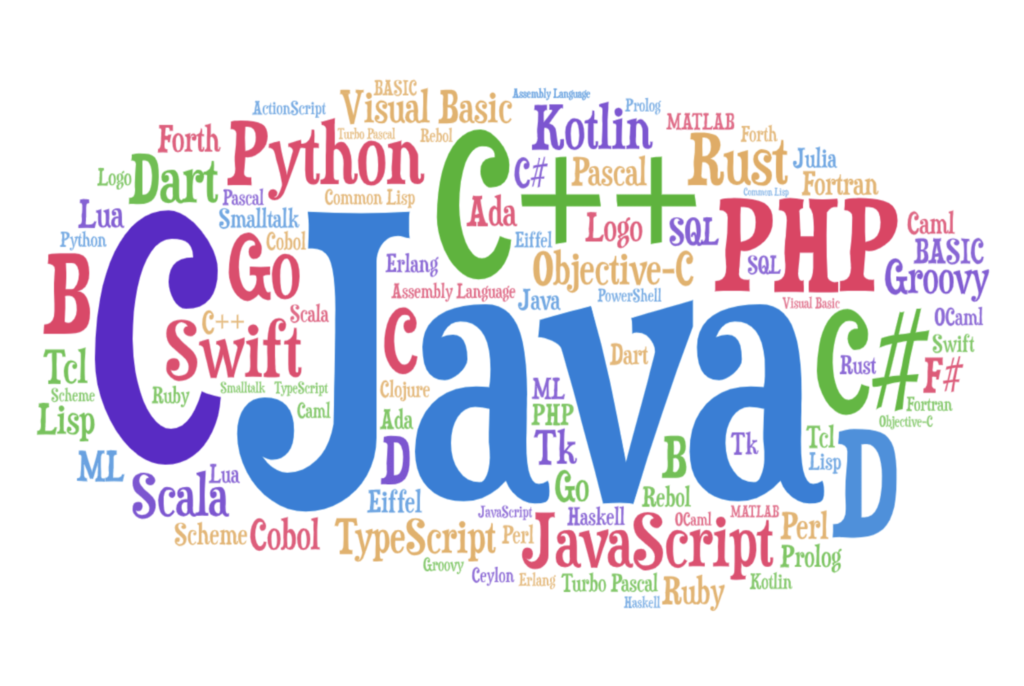Programming languages have been at the heart of computer science since the dawn of computing. They serve as the bridge between human logic and machine operations, evolving alongside advancements in technology and changing the way we interact with computers. The evolution of programming language can be divided into 6 categories across the timeline:
1. The Early Days: Assembly Language and Machine Code
Assembly language marked the first significant step towards more accessible programming, setting the stage for future developments. It was developed because in the 1940s and 1950s, programming was a laborious task conducted in machine code, the binary language understood directly by computers. Each instruction was a sequence of zeros and ones, making programming both challenging and error-prone.Therefore, assembly languages emerged, which provided a slightly more human-readable format. Assembly language uses mnemonics, allowing programmers to write instructions in a way that’s more intuitive than binary.
2. The Rise of High-Level Languages
The 1960s and 1970s saw a revolution with the introduction of high-level programming languages. These languages abstracted away the complexities of machine code, allowing developers to write programs using syntax that resembled human languages. This dramatically increased productivity and made programming more accessible. Some languages that were prevalent during that time are:
- FORTRAN (1957): One of the first high-level languages, designed for scientific and engineering calculations.
- COBOL (1959): Focused on business data processing, emphasizing readability and data handling.
- LISP (1958): A pioneer in artificial intelligence, known for its powerful data manipulation capabilities.
3. The Object-Oriented Revolution
The 1980s introduced object-oriented programming (OOP), a paradigm that emphasized organizing software design around data, or objects, rather than functions and logic. OOP made code more modular, reusable, and easier to maintain. This era transformed software development practices. More sophisticated and maintainable codebases were observed. SOme notable languages of this time:
- C++ (1985): An extension of C that introduced object-oriented features while retaining efficiency.
- Smalltalk (1972): One of the first languages to fully embrace the object-oriented paradigm.
4. The Internet Age: Scripting and Dynamic Languages
With the advent of the internet in the 1990s, there was a surge in the development of scripting and dynamic languages designed for web development and rapid application development.The rise of the internet required new programming approaches, leading to languages that could handle dynamic content and rapid development cycles. Significant languages of this era include:
- JavaScript (1995): Created to enhance web pages, it became a cornerstone of modern web development.
- PHP (1995): A server-side scripting language that facilitated dynamic content on websites.
5. The Modern Era: Versatility and Efficiency
Today, programming languages continue to evolve, focusing on versatility, efficiency, and community support. These programming languages prioritize developer experience, performance, and the ability to handle complex applications efficiently . Some of the noteworthy languages developed during this time are:
- Python (1991): Known for its readability and simplicity, Python has become a go-to language for web development, data science, and machine learning.
- Go (2009): Developed by Google, Go emphasizes simplicity and efficiency in concurrent programming.
- Rust (2010): Known for its focus on safety and performance, Rust is gaining popularity in systems programming.
6. The Future of Programming Languages
As technology advances, the future of programming languages is likely to be shaped by trends such as artificial intelligence, automation, and cross-platform development. New languages will continue to emerge, addressing the needs of specific domains while also improving upon existing paradigms. Trends that are observed include:
- Domain-Specific Languages (DSLs): Tailored languages designed for specific application areas, enhancing productivity.
- Interoperability: Languages that work seamlessly together will become increasingly important as software ecosystems grow more complex.

Therefore, we can conclude that the evolution of programming languages reflects the ongoing dialogue between technology and human creativity. From the early days of assembly language to today’s versatile and powerful languages, each step in this evolution has brought us closer to realizing the full potential of computing. Programming languages continue to evolve and as we step into the future, this evolution will empower the next generation of developers to create even more innovative solutions.

